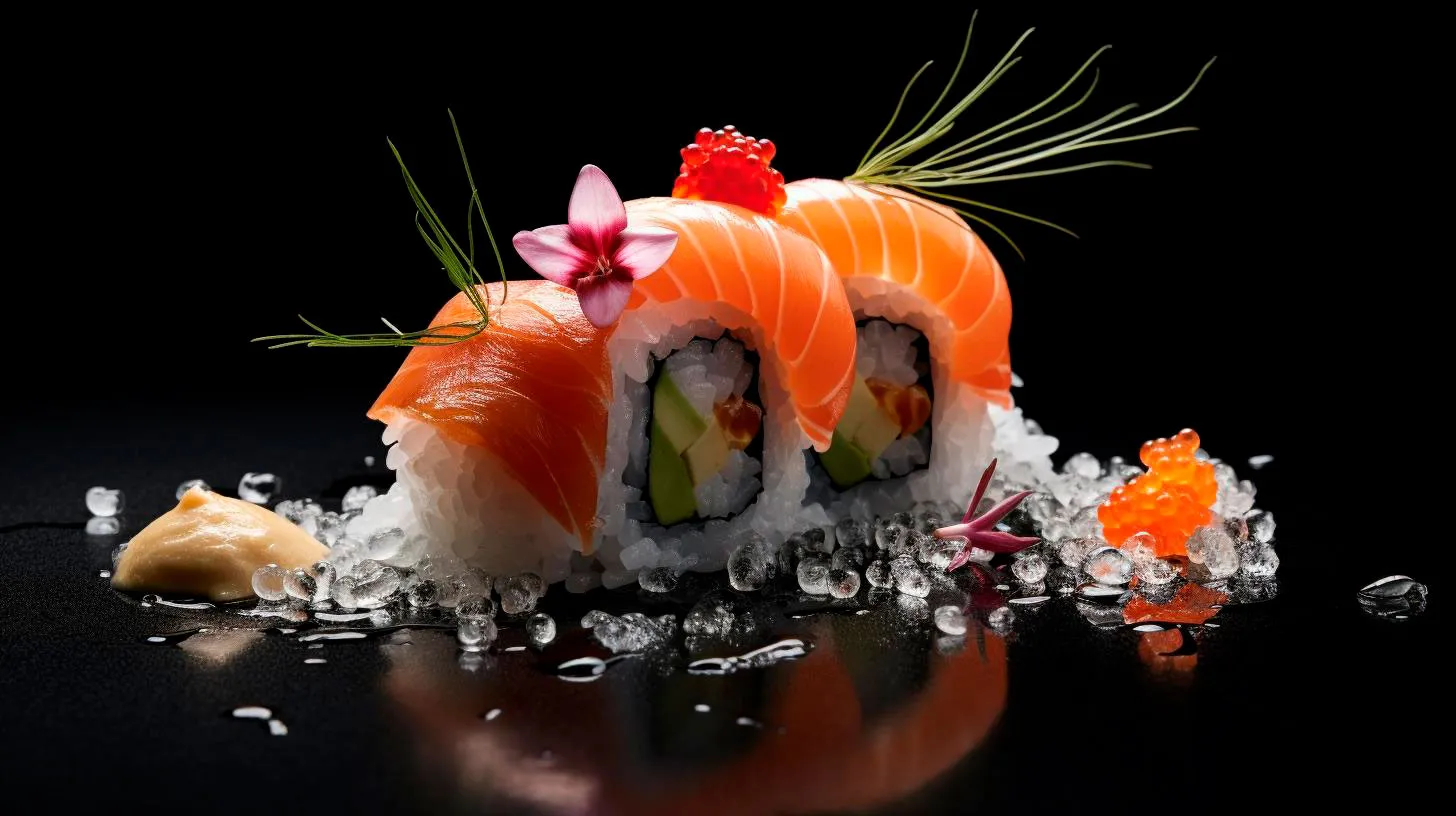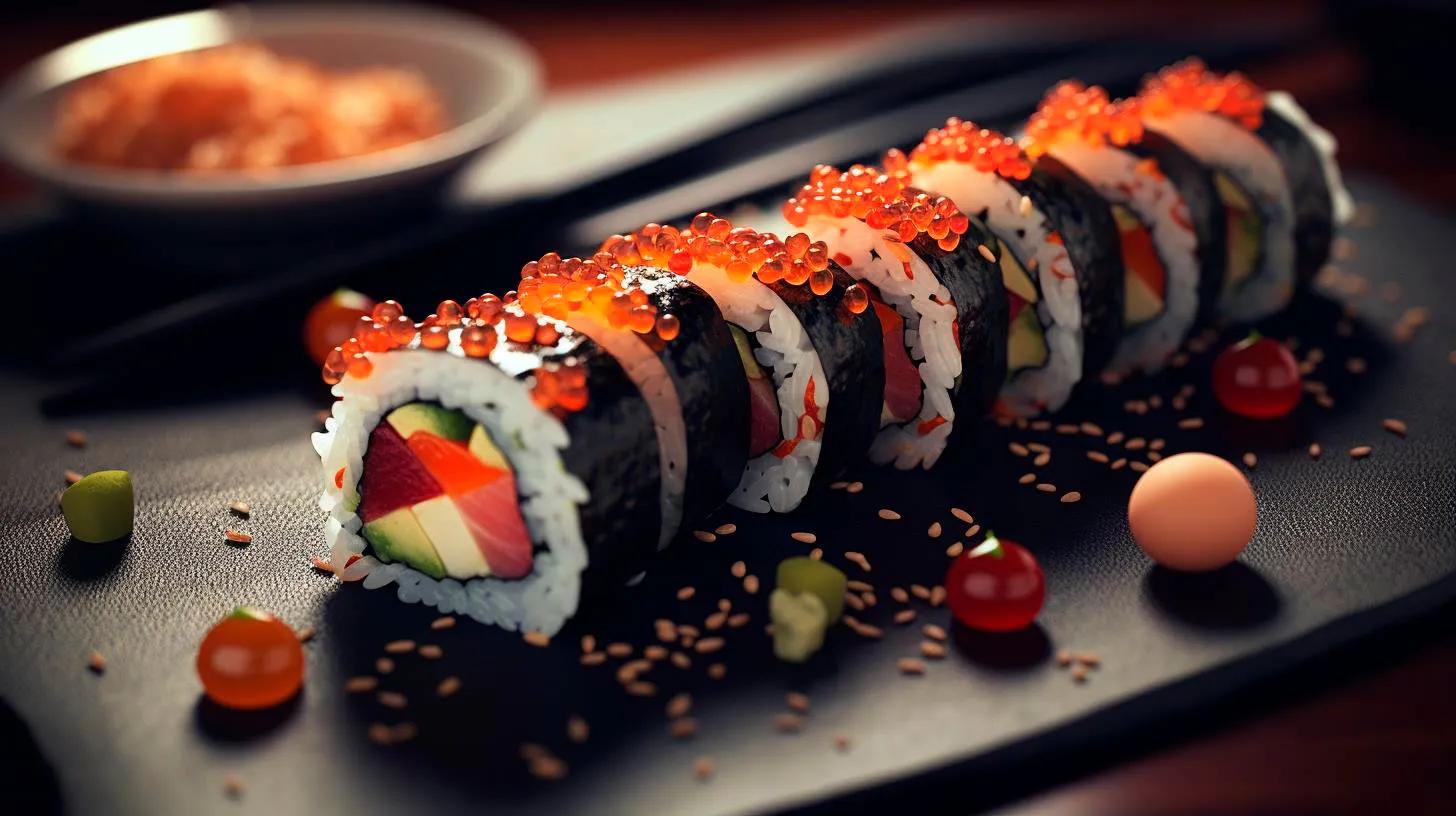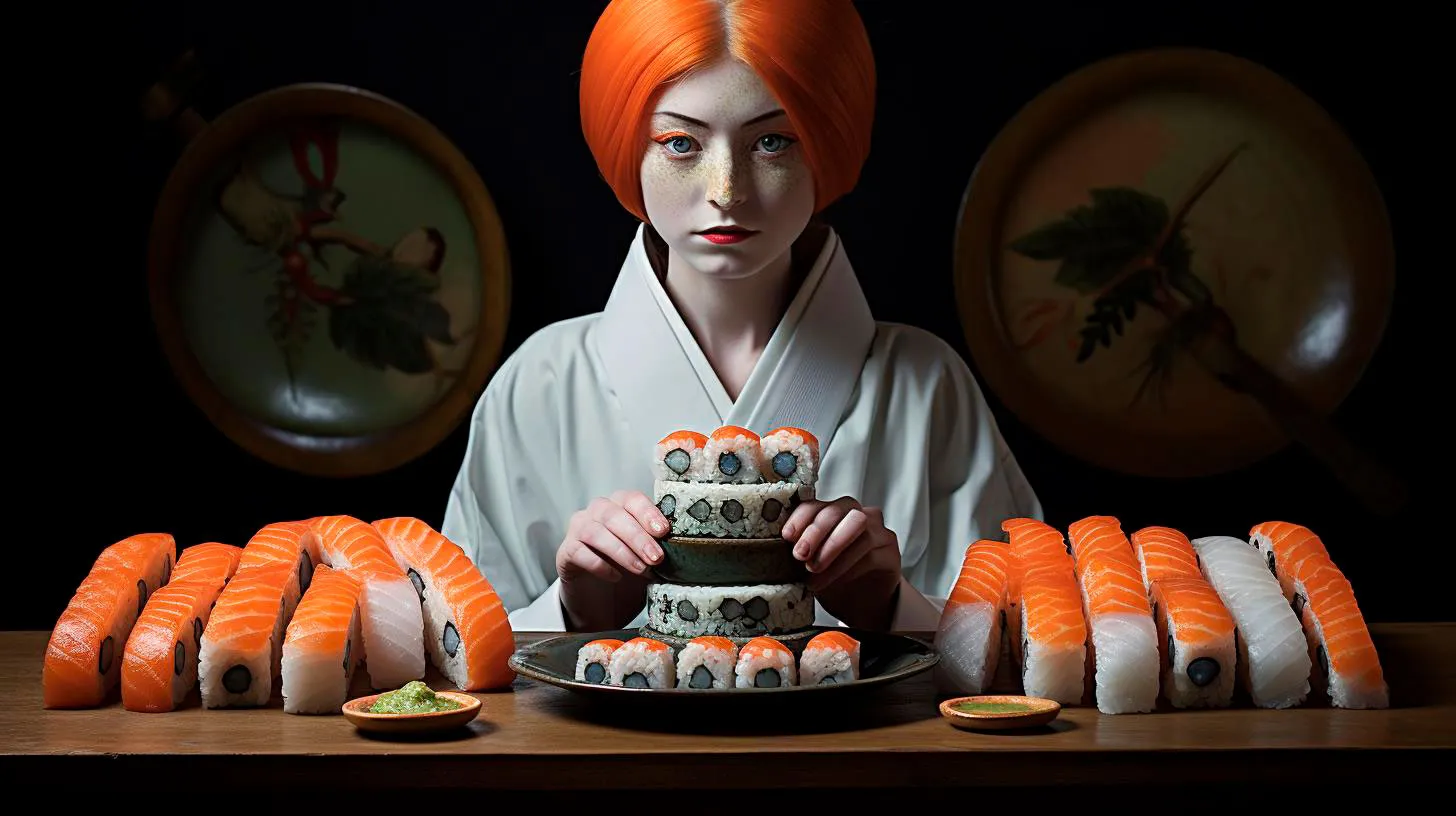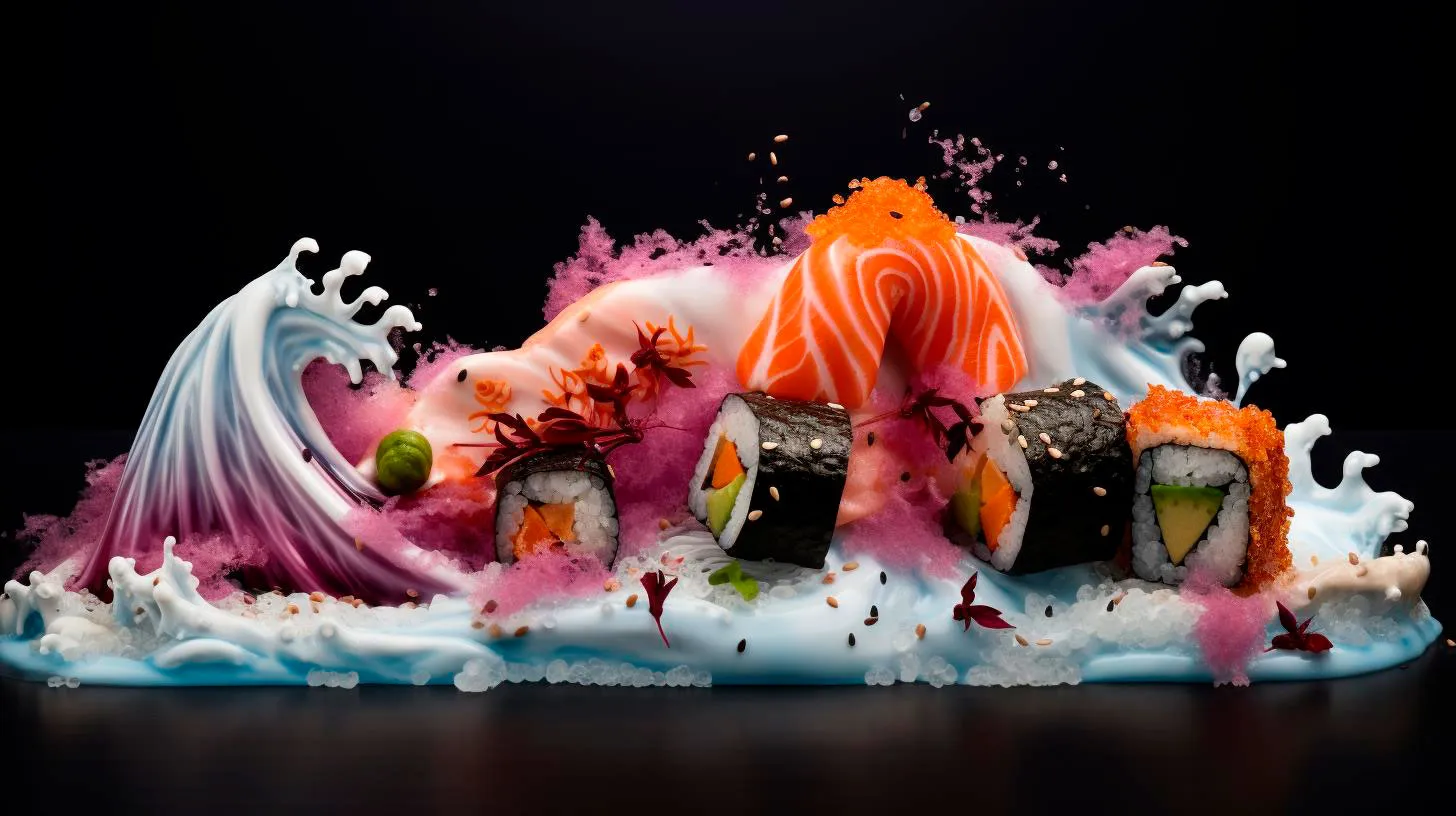Embracing Tradition: Unveiling the Seasonal Delights of Japanese Holiday Cuisine
In this article, we will take a closer look at the seasonal delights of Japanese holiday cuisine and how it has become an integral part of the country’s festive celebrations.
The Essence of Japanese Holiday Cuisine
Japanese holiday cuisine revolves around the concept of “ichiju-sansai,” meaning “one soup, three dishes.” This traditional meal structure symbolizes balance, harmony, and simplicity. The aim is to showcase the natural flavors of each ingredient, bringing out their essence through careful cooking techniques.
Key Takeaways:
- Japanese holiday cuisine is known for its emphasis on seasonal ingredients and simplicity.
- The concept of “ichiju-sansai” represents balance and harmony in traditional Japanese meals.
Seasonal Ingredients Steeped in Tradition
Seasonality is of utmost importance in Japanese holiday cuisine. Each season brings its own unique set of ingredients that are incorporated into traditional dishes. Let’s explore the seasonal delights that await during this festive period:
Winter (December to February)
During the winter season, Japan experiences a cold climate, which calls for heartwarming and nourishing dishes. Some popular ingredients used during this period include:
- Japanese Seafood: Fresh seafood such as crab, salmon, and sea bream take center stage in winter dishes, offering a rich and savory taste.
- Hot Pot: The Japanese hot pot, known as “nabe,” is a favorite winter dish. It is a communal meal where various ingredients, such as vegetables, tofu, and thinly sliced meat, are cooked in a flavorful broth.
- Mochi: Mochi, a rice cake made from glutinous rice, is a quintessential treat during the winter holidays. This sticky and chewy sweet is often enjoyed in its various forms.
Spring (March to May)
As spring arrives, the scenery in Japan transforms with vibrant cherry blossoms and lush greenery. Springtime ingredients lend a refreshing touch to Japanese holiday cuisine:
- Sakura (Cherry Blossoms): Sakura holds a special place in Japanese culture and cuisine. It is often used to infuse delicate flavors into dishes, such as sakura-flavored tea, sweets, and even salt.
- Bamboo Shoots: These tender shoots symbolize spring’s arrival and are used in a variety of dishes, including stir-fries and simmered dishes.
- Strawberries: Springtime signifies the start of strawberry season in Japan. These juicy and sweet berries are enjoyed in various desserts and as a topping for traditional Japanese sweets.
Summer (June to August)
With the hot and humid summer in Japan, lighter and refreshing dishes take the center stage to combat the heat. Some popular ingredients and dishes during this season are:
- Somen: Somen is a thin, white noodle that is typically served chilled during the summer months. It is often accompanied by a dipping sauce and garnished with ingredients like cucumber or green onions.
- Watermelon: Juicy watermelon is a hallmark of summertime. This refreshing fruit is often served as a refreshing dessert or enjoyed in a variety of beverages.
- Unagi (Freshwater Eel): Unagi is grilled freshwater eel glazed in a sweet and savory sauce. It is believed to provide stamina during the hot summer months and is a popular dish during festivities.
Autumn (September to November)
Autumn in Japan brings cooler temperatures and a vibrant display of colorful foliage. Seasonal ingredients during this period include:
- Matsutake Mushrooms: Highly prized in Japanese cuisine, matsutake mushrooms are known for their distinctive aroma and flavor. They are often used in traditional dishes such as rice porridge and hot pots.
- Sweet Potato: Autumn is the season for sweet potatoes in Japan. These versatile tubers are enjoyed in both savory and sweet dishes, including tempura, stews, and desserts.
- Persimmon: Persimmons are a popular autumn fruit in Japan. They are used in a variety of desserts, pickles, and even enjoyed fresh.
The Advantages of Japanese Holiday Cuisine
Japanese holiday cuisine offers several advantages that set it apart from other culinary traditions during the festive season:
- Balanced Nutrition: The focus on fresh, seasonal ingredients ensures a well-rounded meal that provides essential nutrients. The inclusion of vegetables, seafood, and various proteins offers a balanced diet.
- Health Benefits: Japanese holiday cuisine often incorporates cooking methods like steaming, grilling, and simmering, which help retain the nutritional value of ingredients while keeping the dishes low in calories and fat.
- Cultural Significance: Japanese holiday cuisine is deeply rooted in tradition and reflects the country’s values and history. Sharing and enjoying these dishes with loved ones during festive occasions create a sense of cultural connection.
Japanese holiday cuisine embraces tradition while celebrating the bounty of each season. It offers a unique culinary experience that delights the palate and nourishes the body. So, this festive season, consider embracing the enchanting world of Japanese holiday cuisine and savor the seasonal delights it has to offer!
From Hanami to Oshogatsu: Exploring the Vibrant Seasons in Japanese Holiday Feasts
Hanami: A Celebration of Cherry Blossoms
In Japan, spring is a time of renewal and new beginnings. One of the most anticipated events of this season is Hanami, which literally translates to “flower viewing.” Hanami is an age-old tradition where friends, families, and even strangers gather under the blooming cherry blossoms to appreciate their beauty and enjoy outdoor picnics.
The cherry blossoms, also known as sakura, have a significant cultural and historical importance in Japan. They represent the transient nature of life and are a symbol of hope and beauty. Hanami celebrations take place in parks, gardens, and temples all around the country, with some of the most famous locations being Ueno Park in Tokyo and Maruyama Park in Kyoto.
Key Takeaways:
- Hanami is a traditional event in Japan that celebrates the blooming of cherry blossoms
- Cherry blossoms symbolize the transient nature of life and are a beloved symbol of hope and beauty
- Hanami celebrations involve outdoor picnics and gatherings under the cherry blossom trees
Tanabata: Wishing Upon the Stars
When summer arrives, the Japanese celebrate Tanabata, also known as the “Star Festival.” This festival traces its origins to a Chinese legend about the meeting of two stars separated by the Milky Way. According to the legend, these stars are represented by two deities, Orihime and Hikoboshi, who can only meet once a year on the seventh day of the seventh lunar month.
During Tanabata, vibrant decorations are hung in streets, shopping arcades, and homes. Visitors can write their wishes on special strips of colorful paper called tanzaku and attach them to bamboo branches. Festivals, parades, and fireworks are also common during Tanabata, adding to the festive atmosphere.
Key Takeaways:
- Tanabata is a summer festival that celebrates the meeting of two stars represented by deities
- Colorful decorations and bamboo branches with wishes fill the streets during this festival
- Festivals, parades, and fireworks are integral parts of the Tanabata celebrations
Obon: Honoring the Ancestors
In mid-summer, a unique Japanese holiday called Obon takes place. Obon is a time for people to honor and remember their ancestors with a series of Buddhist rituals and customs. It is believed that during this period, the spirits of the deceased return to visit their families.
One of the most recognized customs during Obon is the Bon Odori, a traditional dance performed at festivals throughout Japan. People dress in colorful yukatas and dance in circles to the rhythm of taiko drums and folk music. The dance is meant to welcome and entertain the visiting spirits.
Key Takeaways:
- Obon is a summer holiday where people remember and honor their ancestors
- Bon Odori, a traditional dance, is performed during Obon festivals
- Obon is a time for families to come together and celebrate their heritage
Oshogatsu: Welcoming the New Year
Finally, Oshogatsu marks the beginning of the New Year in Japan. This holiday, which falls on January 1st, is the most important celebration in the country and is filled with various customs and traditions. Families come together to welcome the new year and wish each other good fortune.
One of the key customs during Oshogatsu is Hatsumode, the first visit to a shrine or temple of the year, where people pray for health, happiness, and success. Traditional dishes like ozoni, a special soup with mochi, and osechi-ryori, a variety of colorful and symbolic New Year dishes, are also prepared and enjoyed during this time.
Key Takeaways:
- Oshogatsu is the New Year’s celebration in Japan
- Hatsumode, the first shrine visit of the year, is an important custom during Oshogatsu
- Traditional dishes like ozoni and osechi-ryori are prepared and shared during this festive period
In conclusion, the holiday feasts in Japan offer a unique glimpse into the country’s rich cultural tapestry. From the delicate beauty of Hanami to the joyful spirit of Oshogatsu, each season brings its own set of traditions and customs. These celebrations not only reflect the harmonious relationship between nature and the Japanese people but also provide an opportunity to connect with loved ones and create lasting memories.
Festive Fare: Discovering the Seasonal Splendor of Japanese Holiday Feasts
The Significance of Holiday Feasting
In Japan, holiday feasting holds immense cultural significance. These celebrations bring families and friends together, fostering a sense of togetherness and unity. They are not only about indulging in delectable food but also about honoring ancestral traditions and showing gratitude.
Key Festive Feasts
1. Osechi Ryori
Osechi Ryori is a traditional Japanese New Year’s feast. Packed in beautiful lacquer boxes called Jubako, Osechi Ryori consists of a meticulously arranged assortment of small, flavorful dishes. These dishes are carefully chosen for their auspicious meanings and symbolic significance.
Key features of Osechi Ryori:
- Includes dishes like kuromame (sweet black soybeans for good health) and kazunoko (herring roe for prosperity).
- Presentation is crucial, with colorful ingredients and meticulous arrangements.
- Some ingredients are pickled or preserved, allowing families to celebrate without cooking for several days.
2. Hinamatsuri Cuisine
Hinamatsuri, also known as the Doll Festival or Girls’ Day, is celebrated on March 3rd. During this festival, families display decorative dolls representing the Emperor, Empress, attendants, and musicians on a tiered platform. Hinamatsuri cuisine plays a vital role in the festivities.
Key features of Hinamatsuri Cuisine:
- Chirashi sushi, a colorful dish with various ingredients scattered over vinegared rice, is a popular Hinamatsuri delicacy.
- Traditional sweets like Hina-arare (candy-coated rice crackers) and Sakura-mochi (rice cakes wrapped in cherry blossom leaves) are savored during this festive season.
- The dishes are often beautifully presented with vibrant colors and intricate designs, emphasizing the visual aspect of the feast.
3. Cherry Blossom Viewing Picnics
During the spring season, when cherry blossoms (sakura) paint the landscapes with hues of pink, the Japanese partake in hanami, the tradition of flower viewing. As part of the celebrations, families and friends indulge in Hanami bento, special packed meals.
Key features of Hanami Bento:
- Bento boxes contain various delicacies, including onigiri (rice balls), tempura, grilled fish, and colorful salads.
- These meals are portable, making them perfect for outdoor cherry blossom viewing picnics.
- Cherry blossom-inspired sweets, such as sakura mochi and sakura-flavored drinks, are also popular.
4. Tsukimi Cuisine
Tsukimi, or the Moon Viewing Festival, is celebrated in autumn when the full moon graces the night sky. During this festival, families gather to express gratitude for the autumn harvest and enjoy a special feast.
Key features of Tsukimi Cuisine:
- Savory dishes like Tsukimi udon (noodles in broth) and takoyaki (grilled octopus balls) are commonly enjoyed during this festival.
- Tsukimi dango, round dumplings made from glutinous rice, are a must-have treat during the Moon Viewing Festival.
- The food is usually arranged to resemble the moon, emphasizing the celestial theme of the celebration.
Experience the Japanese Festive Feasts
Immersing yourself in the captivating world of Japanese holiday feasts is an incredible way to understand the country’s culture and traditions. Here are a few key takeaways:
- Holiday feasting in Japan is deeply rooted in history and customs, offering a gateway into the nation’s cultural heritage.
- Food presentation is highly valued, with dishes not only being delicious but also visually appealing.
- Symbolism plays a significant role in Japanese holiday feasts, with ingredients selected for their auspicious meanings.
- These celebrations provide an opportunity for families and friends to come together and foster a sense of unity.
By partaking in the seasonal splendor of Japanese holiday feasts, you can embark on a culinary journey through Japan’s vibrant traditions and create lasting memories. So, gather your loved ones, explore traditional recipes, and indulge in the delightful flavors that epitomize the festive spirit of Japan.
Savoring the Delights: A Culinary Journey through Japanese Holiday Feasts
Take a tantalizing journey with us as we explore the delectable delights of Japanese holiday feasts.
Understanding Japanese Holiday Feasts
Japanese holiday feasts are deeply rooted in ancient traditions and play a significant role in the country’s culture. These feasts not only celebrate important events but also serve as an opportunity to cherish family, friends, and the bounties of each season. Let’s dive into some of the most celebrated Japanese holiday feasts:
1. Oshogatsu (New Year’s)
- A time of renewal and new beginnings, Oshogatsu, or New Year’s, is the most important holiday in Japan.
- Traditional osechi ryori, a special New Year’s meal, is prepared featuring various dishes symbolizing good luck, wealth, and health.
- Ozoni, a soup made with mochi (rice cakes) and vegetables, is a must-have dish during Oshogatsu.
- The holiday season is not complete without indulging in osechi sweets, such as wagashi, delicate traditional confections.
2. Hinamatsuri (Girls’ Day)
- Also known as the Doll’s Festival, Hinamatsuri celebrates the happiness and well-being of girls in Japan.
- Special dishes featuring chirashi sushi (scattered sushi), clear broth soup, and hina arare (colorful rice crackers) are enjoyed on this day.
- A highlight of the festival is the display of ornamental dolls called hina dolls, representing the imperial court from the Heian period.
3. Hanami (Cherry Blossom Viewing)
- The arrival of cherry blossoms in spring is celebrated with the Hanami festival.
- Picnics beneath cherry blossom trees are a common practice, with people gathering with family and friends.
- Traditional hanami foods include bento boxes with an assortment of sushi, onigiri (rice balls), and sakura mochi (sweet rice cakes).
- Sakura-themed beverages, such as sakura tea and sakura-flavored beer, are also popular during this time.
4. Otsukimi (Moon Viewing)
- Otsukimi is an autumn tradition that involves appreciating the beauty of the moon.
- Seasonal delicacies like tsukimi soba (buckwheat noodles) and dango (sweet dumplings) are enjoyed on this occasion.
- The dishes served symbolize the harvest season and express gratitude for the abundant crops.
The Key Takeaways
Exploring Japanese holiday feasts not only allows us to savor incredible culinary delights but also opens a window into centuries-old traditions and cultural heritage. Here are some key takeaways from our culinary journey:
- Japanese holiday feasts celebrate important events and provide an opportunity to gather with loved ones.
- Traditional dishes are prepared with great care and often feature symbolic elements.
- Each feast has its unique flavors, highlighting the distinct characteristics of the season.
- Food presentation is taken to an art form, with attention to detail and aesthetics.
- Holiday feasts bring a sense of community and foster a deep appreciation for nature.
As you embark on your Japanese culinary adventure, remember to embrace not just the flavors but also the cultural significance and stories behind each dish. Whether you’re participating in a Hanami picnic or enjoying an Oshogatsu feast, let the delights of Japanese holiday feasts transport you to a world of tradition and flavor!



